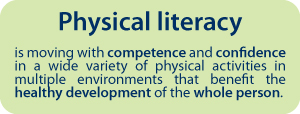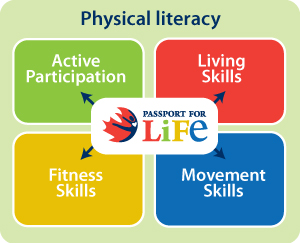Intermediate Warm-up activity or cardio-respiratory endurance to get them moving and critically thinking about their personal fitness.
WHAT - WHERE - WHEN - WHO - HOW - WHY...IS - DID - CAN - WOULD - WILL - MIGHT
Equipment:
- Die (6-8 pairs of die)
- 6-8 Fitness Q-Chart Posters (click for download)
- Pylons to designate a safe zone around die/posters if needed
Instruct students to find a partner.
Have a couple sets of Die in the middle of the gym (use clear mini lunch box containers and place 2 die inside then students shake) or in each corner. Post the Fitness Q-Chart on the wall or place beside the die in the centre of the activity space.
Partners role 2 die once. One number corresponds to vertical column and other to the horizontal column (their choice after reading each corresponding question. The numbers cross-reference to a critical question in the matrix along with a fitness activity. Students perform the number of repetitions MULTIPLIED BY THE NUMBERS (1X3=3 REPS).
Example: Roll a 1 and 3: 1(WHAT) by 3(CAN) = What can you do to make your lifestyle more healthy and/or active? (1X3=3) 3 REPS of LOW ROW.
Partners then jog one lap returning to the corner they started from or return back to the middle and roll the dice again for the allotted time.
Partners then jog one lap returning to the corner they started from or return back to the middle and roll the dice again for the allotted time.





